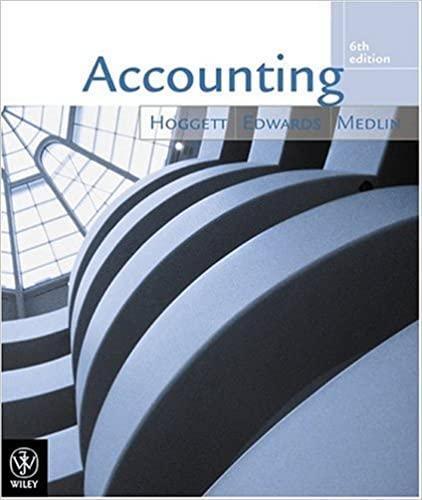to praiti I acie or A,3 acres of B, and no acres of C of D, then we can find the following expected profit knowing that planting 3 acres of B means that crop B is repeated 2 times (1+2=3). 1) Great State: [((75%)($3,600))($1,000)]+[((79%+3%+3%)($2,980)(3))((3)($950))]=$6,449.00 2) Good State: [((53%)($3,600))($1,000)]+[((59%+1%+1%)($2,980)(3))((3)($950))]=$3,511,80 3) Bad State: [((35%)($3,600))($1,000)]+[((43%3%3%)($2,980)(3))((3)($950))]=$717.80 4) Overall Expected Profit: [(25%)($6,449.00)]+[(50%)($3,511.80)]+[(25%)($717.80)]=$3,547.60 A. How many possible combinations are there? B. What is the expected profit from using each crop for 1 acre? What is the standard deviation here? What is the risk-return ratio? C. Show and explain what you think to be the best strategy. Show the work for this and show the work for you trialing at least 4 different crop planting strategies (not including part B but following the steps using in part B). 6. Let's say a farmer can plant any combination of four crops (A, B, C, or D) in her 4-acre field. She can plant any combination of crops so that each crop has between 0 to 4 acres planted. No crops can take up a part of an acre, nor can it share any acre with another crop. She also cannot plant beyond her 4 acres. Each acre of crop has an annual cost as well as potential revenue. Within farming, exists the general law of return and risk proportions. The more you plant of each crop, the better they are likely to perform since crops that are similar synergistically assist the growth of those around it. The diversity of crops can create obstacles to crop development and ultimately, revenue generation. However, a diverse set of crops allows for higher risk due to lower likelihood of survival. In nature, a virus or a catastrophic event can easily decimate a major population. There are 3 states of the world: \{Great, Good, Poor\}; their respective probabilities of annual occurrence are: {25%,50%, and 25%}. Each crop holds respective resiliencies (survival rates of the crop per acre which is multiplied by potential revenue per acre to determine expected revenue per acre). In a great state of the world, the resiliency of a crop increases by 3% for each plant repetition. In a poor state of the world, the resiliency of a crop decreases by 3% for each plant repetition. In an average state, the resilience of a crop increases by 1% for each plan repetition. For example, if we opt to plant 1 acre of A,3 acres of B, and no acres of C or D, then we can find the following expected profit knowing that planting 3 acres of B means that crop B is repeated 2 times (1+2=3). 1) Great State: [((75%)($3,600))($1,000)]+[((79%+3%+3%)($2,980)(3))((3)($950))]=56,449.00 2) Good State: [((53%)($3,600))($1,000)]+[((59%+1%+1%)($2,980)(3))((3)($9501))]=$33.51.80 3) Bad State: [((35%)($3,600))($1,000)]+[((43%3%3%)($2,980)(3))((3)($950))]=$717.80 4) Overall Expected Profit: [(25%)($6,449.00)]+[(50%)($3,511.80)]+[(25%)($717.80)]=$3.547.60 to praiti I acie or A,3 acres of B, and no acres of C of D, then we can find the following expected profit knowing that planting 3 acres of B means that crop B is repeated 2 times (1+2=3). 1) Great State: [((75%)($3,600))($1,000)]+[((79%+3%+3%)($2,980)(3))((3)($950))]=$6,449.00 2) Good State: [((53%)($3,600))($1,000)]+[((59%+1%+1%)($2,980)(3))((3)($950))]=$3,511,80 3) Bad State: [((35%)($3,600))($1,000)]+[((43%3%3%)($2,980)(3))((3)($950))]=$717.80 4) Overall Expected Profit: [(25%)($6,449.00)]+[(50%)($3,511.80)]+[(25%)($717.80)]=$3,547.60 A. How many possible combinations are there? B. What is the expected profit from using each crop for 1 acre? What is the standard deviation here? What is the risk-return ratio? C. Show and explain what you think to be the best strategy. Show the work for this and show the work for you trialing at least 4 different crop planting strategies (not including part B but following the steps using in part B). 6. Let's say a farmer can plant any combination of four crops (A, B, C, or D) in her 4-acre field. She can plant any combination of crops so that each crop has between 0 to 4 acres planted. No crops can take up a part of an acre, nor can it share any acre with another crop. She also cannot plant beyond her 4 acres. Each acre of crop has an annual cost as well as potential revenue. Within farming, exists the general law of return and risk proportions. The more you plant of each crop, the better they are likely to perform since crops that are similar synergistically assist the growth of those around it. The diversity of crops can create obstacles to crop development and ultimately, revenue generation. However, a diverse set of crops allows for higher risk due to lower likelihood of survival. In nature, a virus or a catastrophic event can easily decimate a major population. There are 3 states of the world: \{Great, Good, Poor\}; their respective probabilities of annual occurrence are: {25%,50%, and 25%}. Each crop holds respective resiliencies (survival rates of the crop per acre which is multiplied by potential revenue per acre to determine expected revenue per acre). In a great state of the world, the resiliency of a crop increases by 3% for each plant repetition. In a poor state of the world, the resiliency of a crop decreases by 3% for each plant repetition. In an average state, the resilience of a crop increases by 1% for each plan repetition. For example, if we opt to plant 1 acre of A,3 acres of B, and no acres of C or D, then we can find the following expected profit knowing that planting 3 acres of B means that crop B is repeated 2 times (1+2=3). 1) Great State: [((75%)($3,600))($1,000)]+[((79%+3%+3%)($2,980)(3))((3)($950))]=56,449.00 2) Good State: [((53%)($3,600))($1,000)]+[((59%+1%+1%)($2,980)(3))((3)($9501))]=$33.51.80 3) Bad State: [((35%)($3,600))($1,000)]+[((43%3%3%)($2,980)(3))((3)($950))]=$717.80 4) Overall Expected Profit: [(25%)($6,449.00)]+[(50%)($3,511.80)]+[(25%)($717.80)]=$3.547.60








